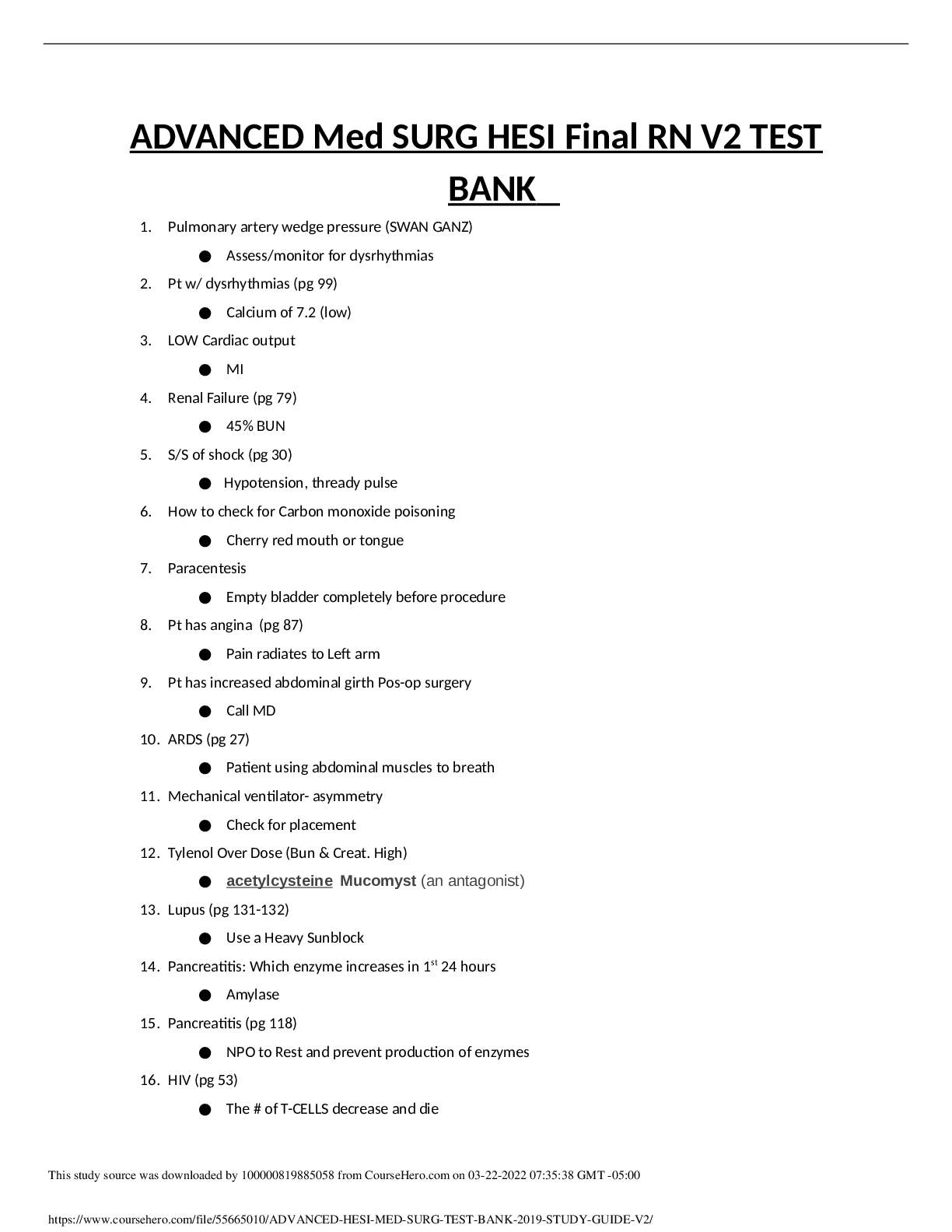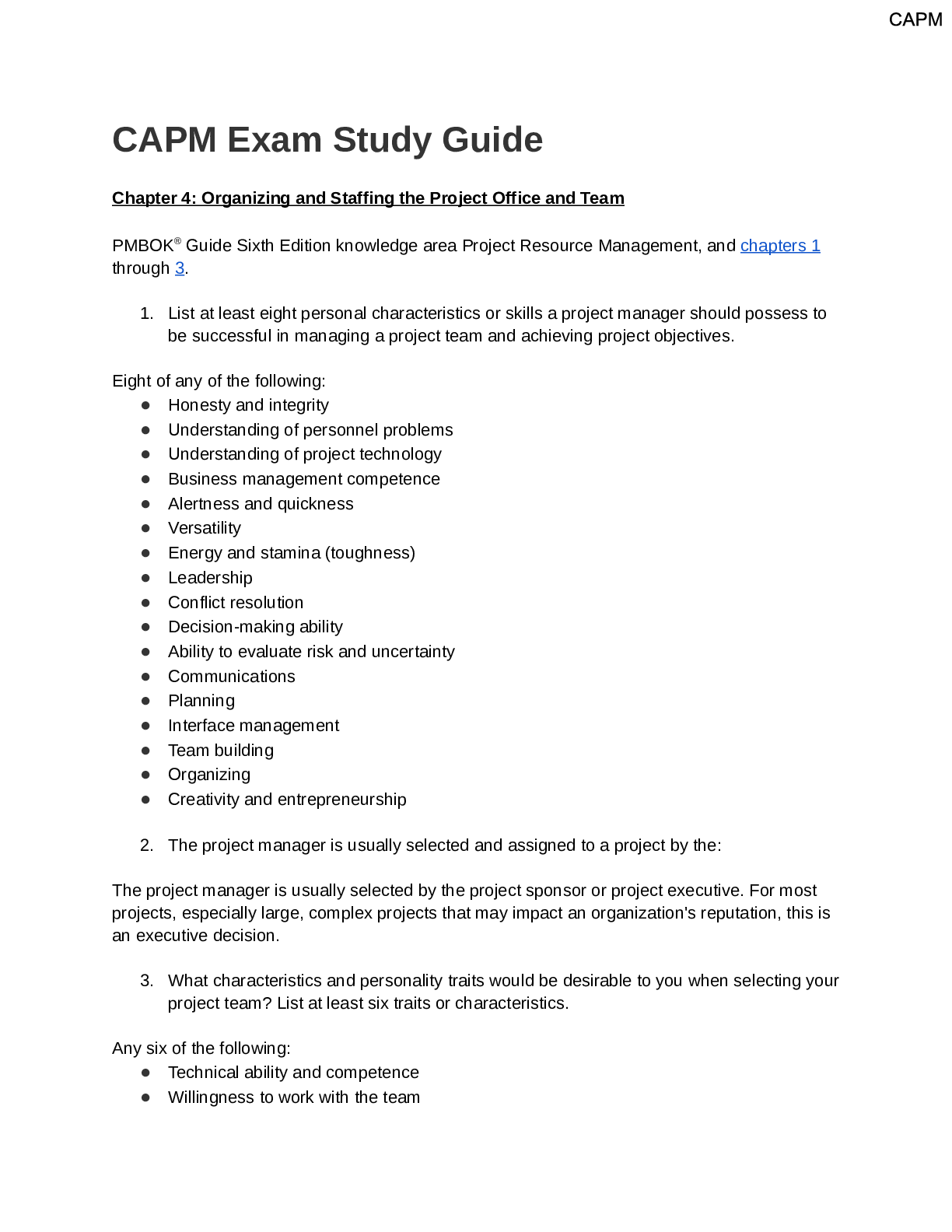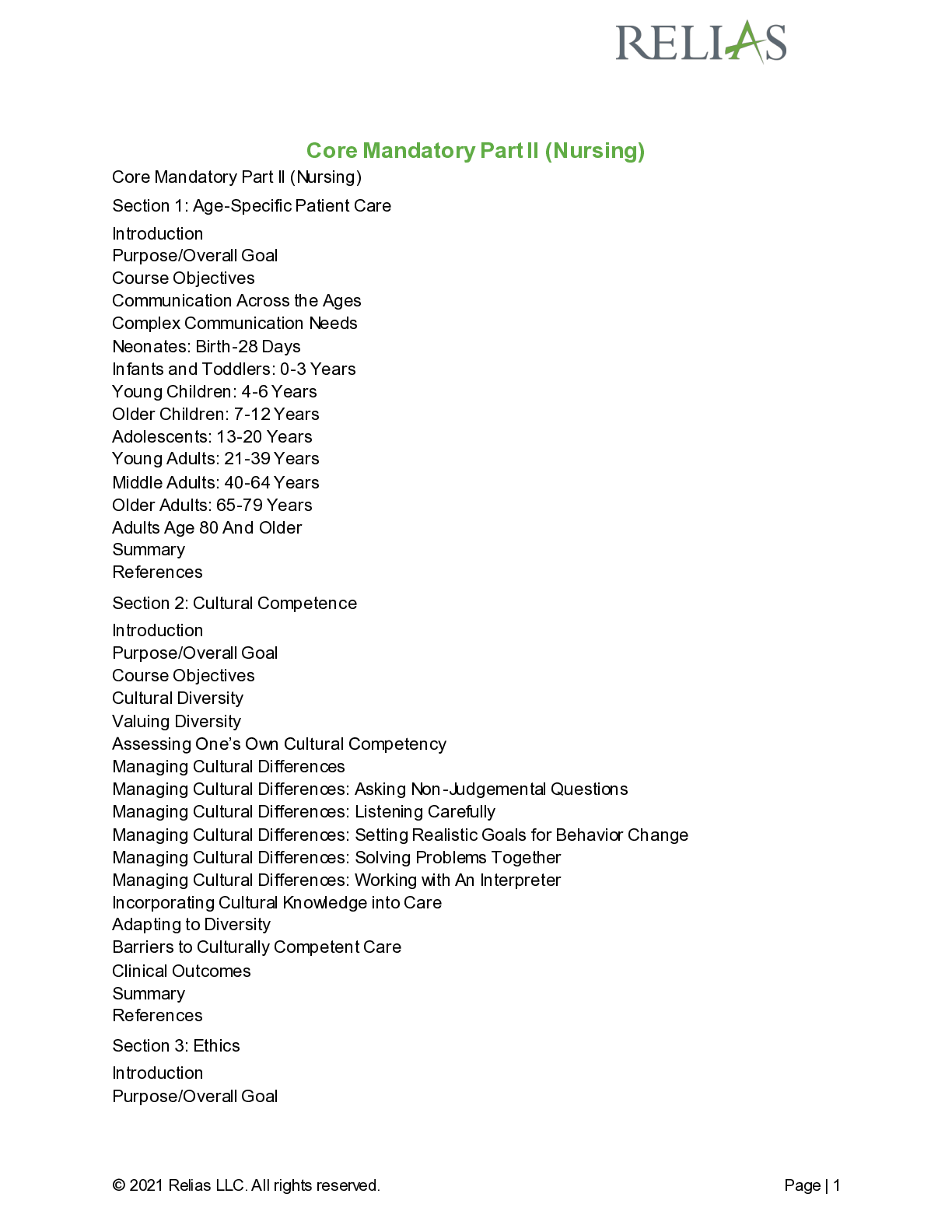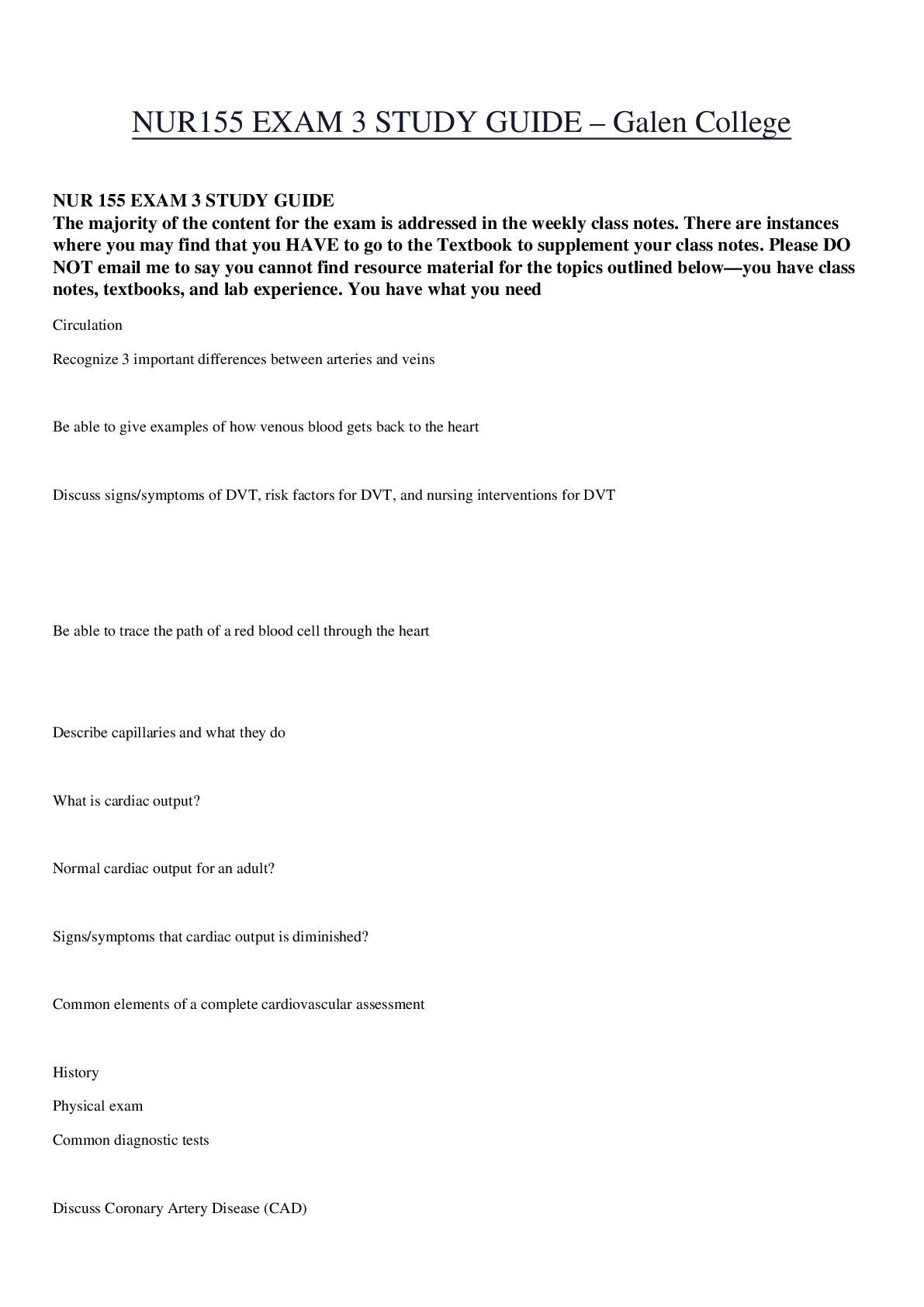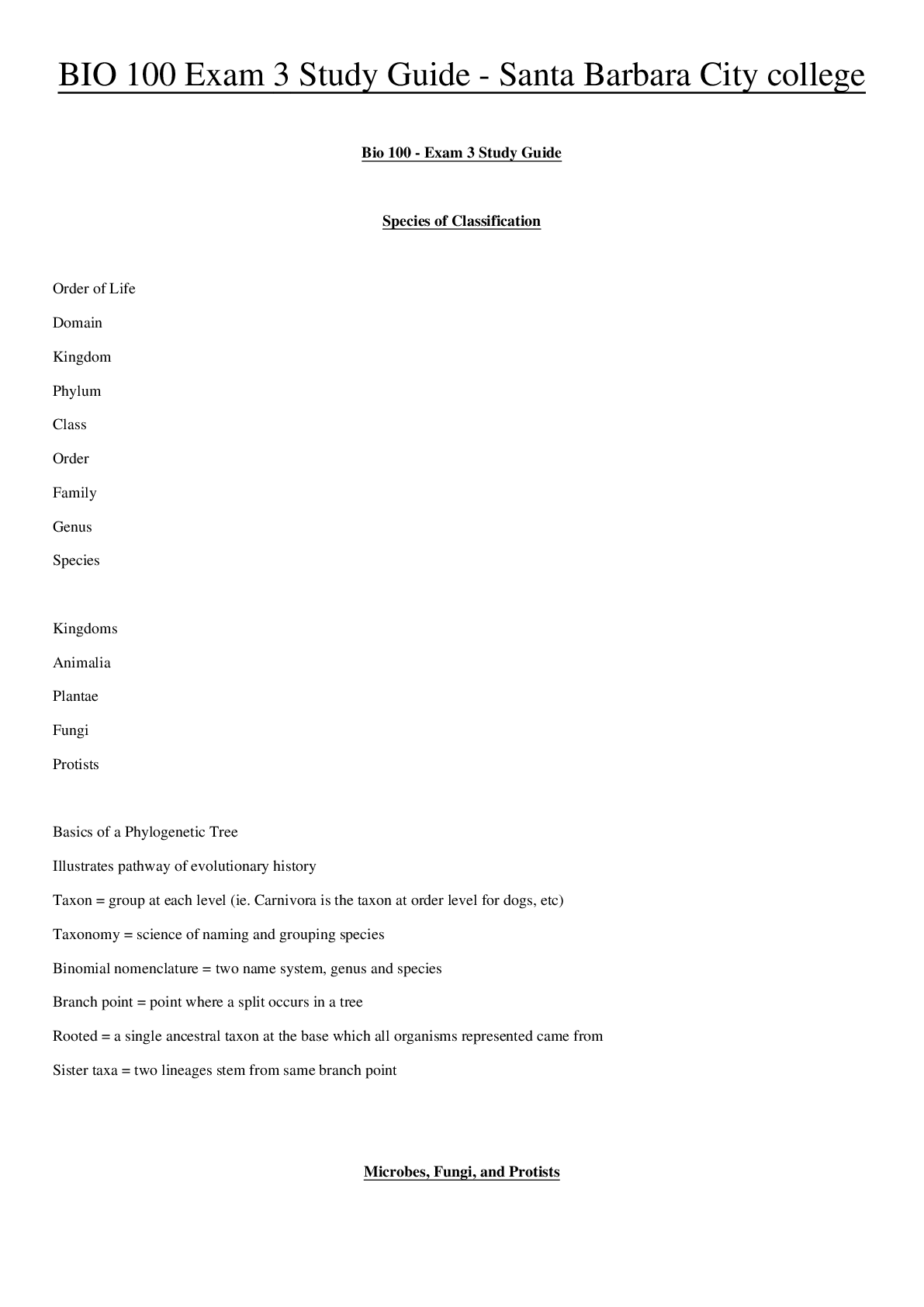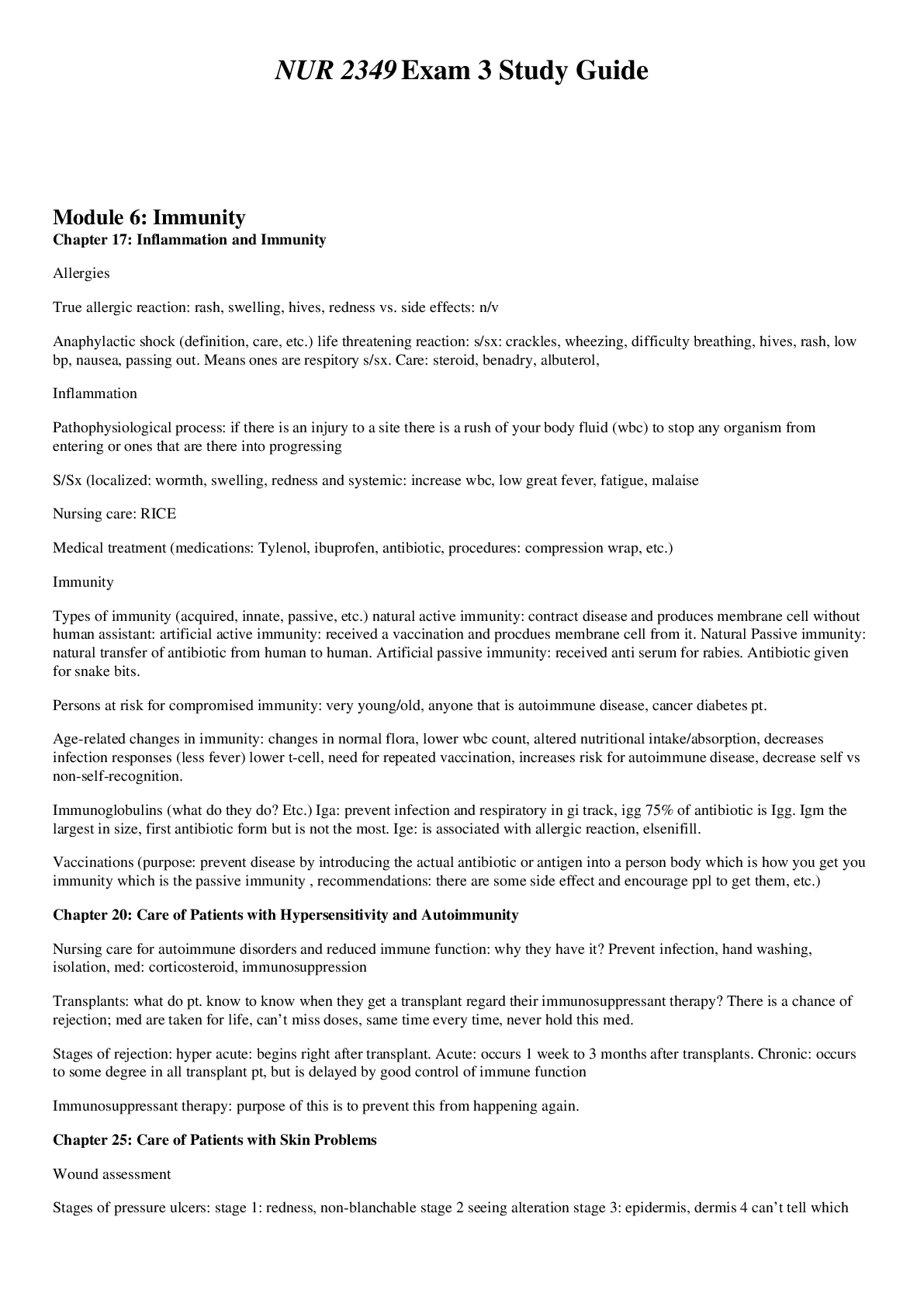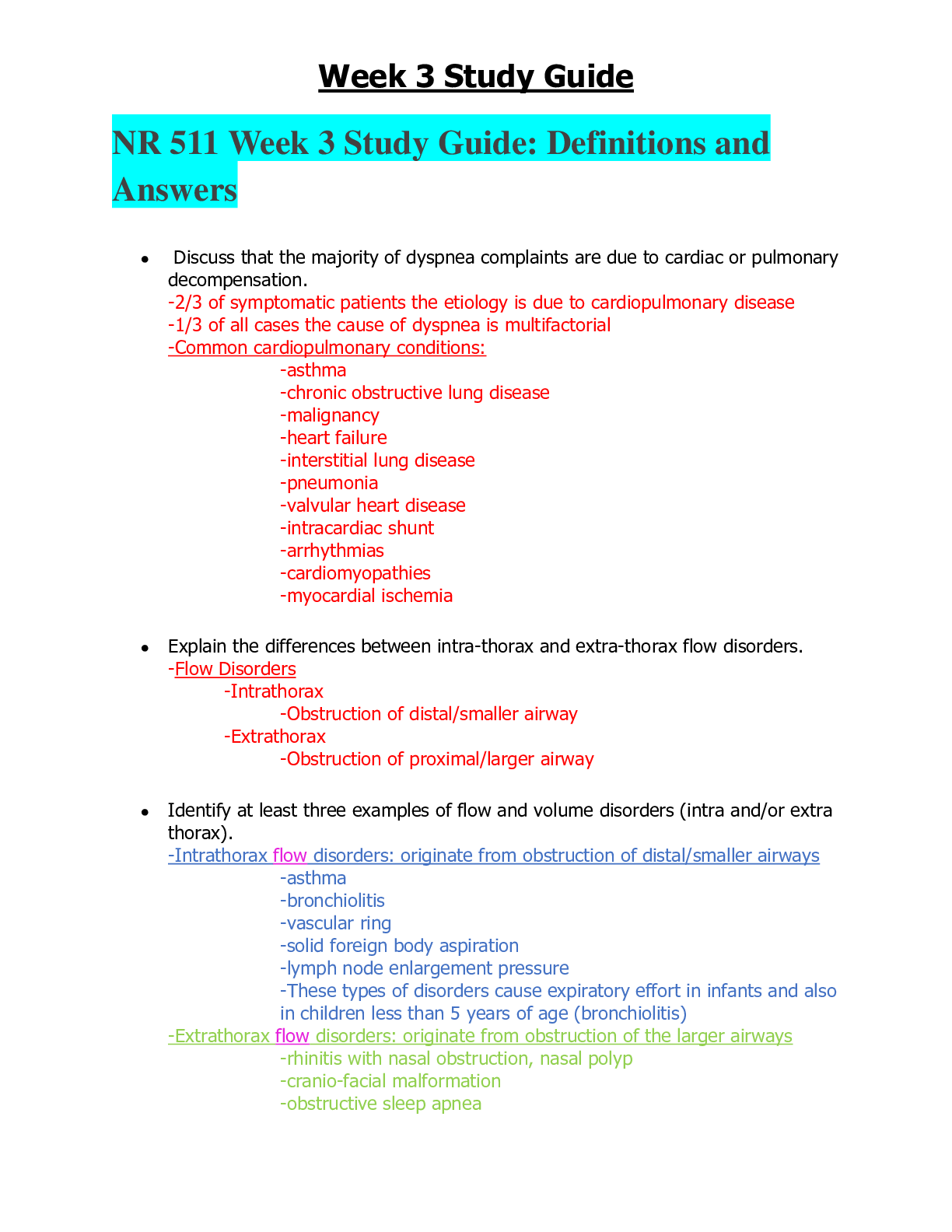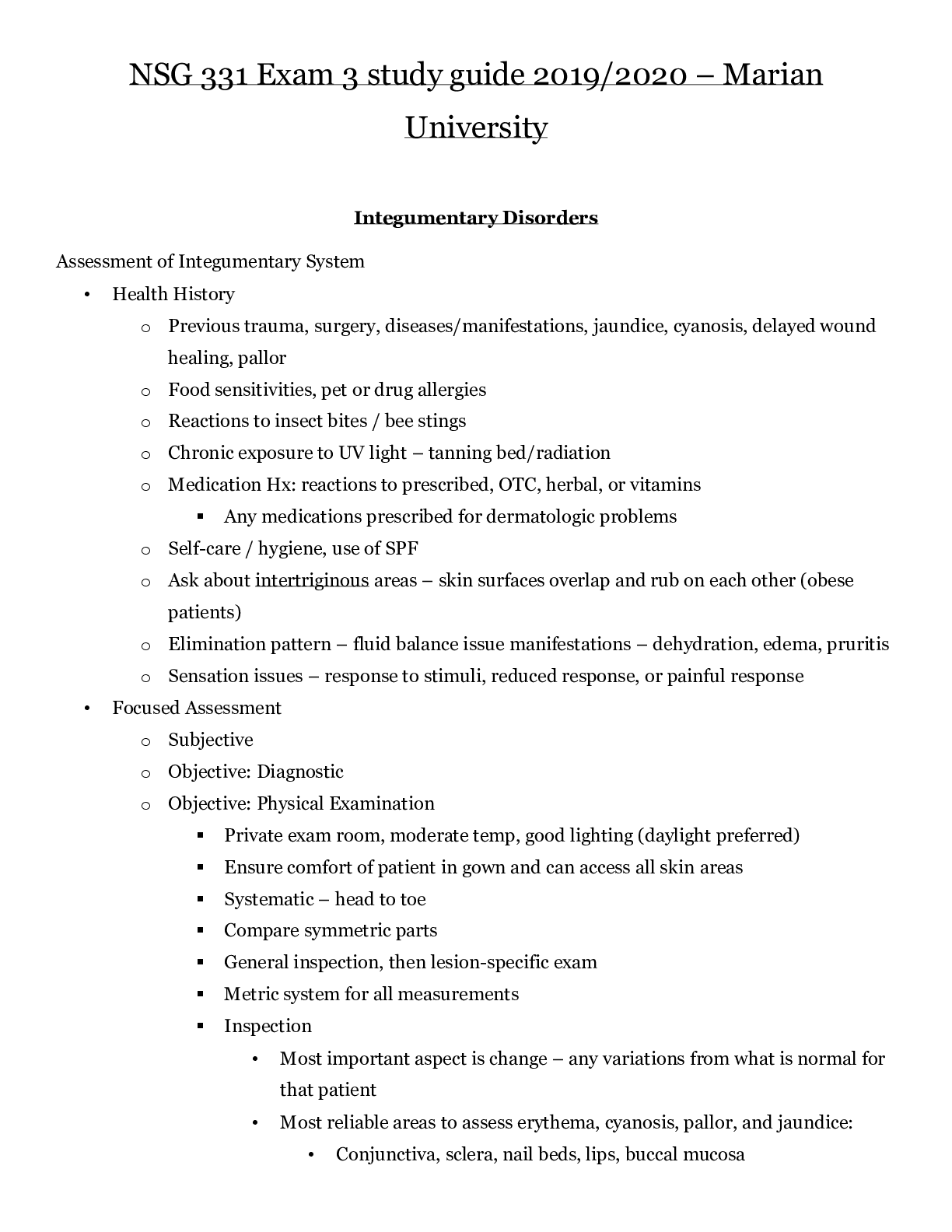Pharmacology > STUDY GUIDE > Pharmacology Exam 3 Study Guide (All)
Pharmacology Exam 3 Study Guide
Document Content and Description Below
Cardiovascular A. Digoxin a. How does this medication work? Force of contraction in ventricles b. What is it used for? Manage Cardiac dysrhythmias . Slows and strengthens the heart. c. How do you ... know if the medication is working? What would you expect to see change in the patient? Decreased heart rate –Normal heart rate and sound closer to base line d. What category of medications does Digoxin belong in? antiarrhythmia e. What priorities are there prior to administering medication? Apical pulse (60 seconds), monitor digoxin level (symptoms of toxicity) Signs/symptoms f. What patient teaching needs to be included? Check pulse, sign/symptom toxicity, follow up with provider to check labs (bradycardia) >2 ng/ml g. When should this medication be held? Pulse <60. Signs of toxicity. Swallowing difficulty. h. What are signs of Digoxin Toxicity? Visual illusions, confusion, delirium, PVC’s, Cardiac Dysrhythmias, fast heart beat, irregular pulse, loss of appetite, n/v,diarrhea ANTIDOTE = digoxin immune Fab (Digibind) **check apical pulse for a full minute before administering medication -hold for heart rate below 60 bpm -does not affect blood pressure -encourage patient to eat high potassium diet ***monitor for S/S of digoxin toxicity: N/V vision changes(yellow/ green halo vision, bradycardia, dysrhythmias, confusion >>educate patients to have digoxin levels checked (toxic level= >2ng/ml) B. Diuretics a. What are the various reasons these medications are used? Hypertension, CHF, edema b. What lab values help to determine the need for these medications (think heart failure)? BNP <100 is good lab value. c. Thiazide diuretics i. Example: 1. HCTZ ii. What are the indications for use? Edema, CHF, hypertension iii. What needs to be monitored prior to administration of medication? Daily weight iv. What labs do we monitor to determine if the patient is in renal failure? Creatin, GFR v. What race responds well to this category of medication? African American vi. For the elderly, what precautions need to be taken? Fall risk, renal function, dehydration d. Loop Diuretics i. When is the best time to take these medications? Morning ii. What is an important way to monitor fluid retention (also can do this with thiazide diuretics)? Daily weight iii. Examples: 1. Furosemide (Lasix), Bumetanide, piretanide, torasemide a. What is a symptom that the patient should report immediately if experiencing while on this medication (or aspirin)? Tinnitus e. Potassium Sparing Diuretics i. What food substitute should be avoided with this group of medications? Sodium f. With many diuretics, potassium needs to be replaced. What are the normal levels of potassium? When should it be administered? Should you ever chew potassium tablets? Normal Potassium Levels 3.5-5.5 mEQ/L. Never chew or crush potassium tablets but may be dissolved. <2.5 is critical C. Calcium Channel Blockers a. What are they used for? Hypertension, cardiac arrhythmias, THEY ARE A VASODIALATOR b. Best to treat HTN in African Americans if HCTZ doesn’t work c. What patient education is important for this group of medications? Monitor bp, heart rate, rise slow. d. Side effects: Orthostatic hypotension, peripheral edema, increased fall risk, flushing e. What are examples of this category of medications? i. Nifedipine (Procardia) ii. Diltiazem D. Beta Blockers : Ends in LOL. Inderal (Propanolol) , Coreg (carvidilol) a. What are they used for? hypertension b. What needs to be monitored/checked prior to administration? Monitor BP, Pulse c. What do you need to teach your patient to check prior to taking medication at home? Monitor bp pulse and when to hold it . Hold is <60 bpm and SBP <90 d. When do you hold these medications? Systolic under 100 pulse under 60 e. What effect does wine have with this type of medication? Increase effect. Drops vital signs. f. Examples: i. Metoprolol (Lopressor) ii. Atenolol ( Tenormin) iii. Propanolol (Inderal) iv. Carvidilol (Coreg) ***Don’t stop abruptly Can cause Hypertension E. ACE inhibitors (ALL END IN PRIL) Lisinopril (Zestril) a. What is the medication given for? Hypertension & HF b. How does it work? Blocks acetylcholine receptors, dilates vessels to lower bp. Prevents vasoconstriction Diuresis c. What is a common side effect of this group of meds that can be bothersome to patients? Persistent Dry cough. Adverse: angioedema (life threatening), Hypotension, orthohypo, hyperkalemia in diabetics, renal failure and with potassium-sparing diuretics. F. Nitroglycerin a. How does this medication work? Dialates blood vessels b. What different forms are available of this medication? Sublingual Tablets, ointment, patches [Show More]
Last updated: 2 years ago
Preview 1 out of 4 pages

Buy this document to get the full access instantly
Instant Download Access after purchase
Buy NowInstant download
We Accept:

Reviews( 0 )
$8.50
Can't find what you want? Try our AI powered Search
Document information
Connected school, study & course
About the document
Uploaded On
Aug 17, 2021
Number of pages
4
Written in
Additional information
This document has been written for:
Uploaded
Aug 17, 2021
Downloads
0
Views
42

